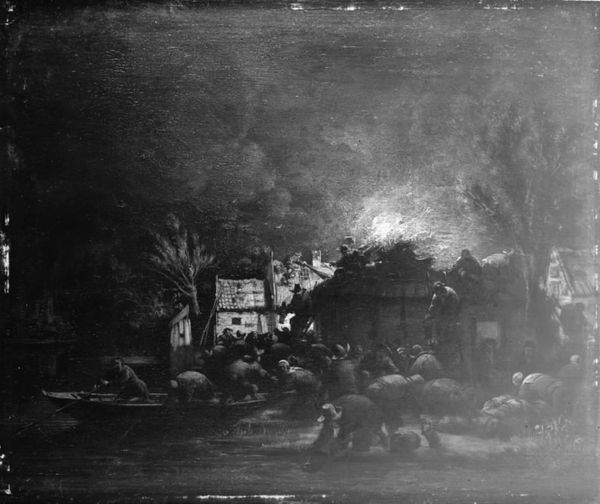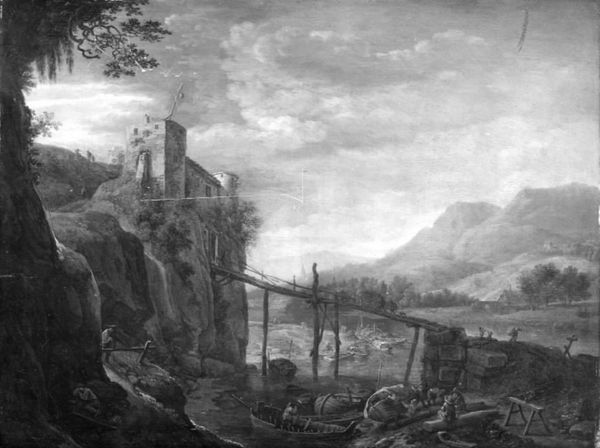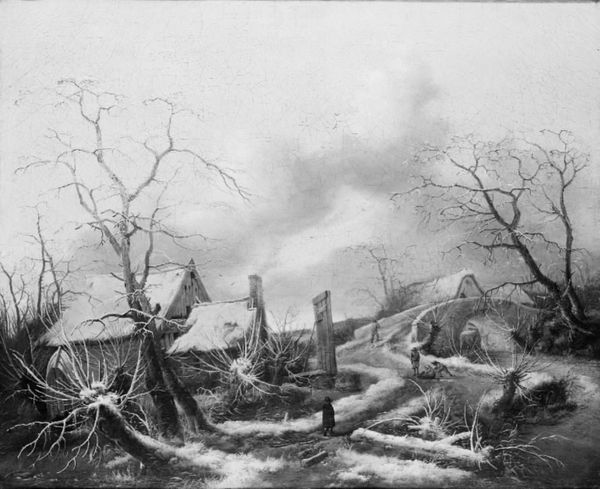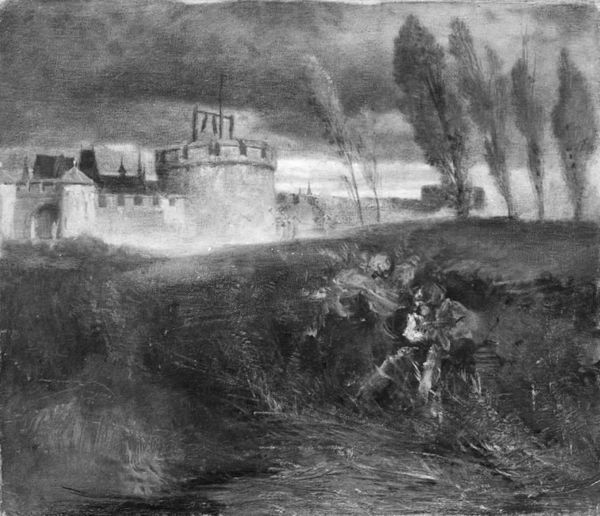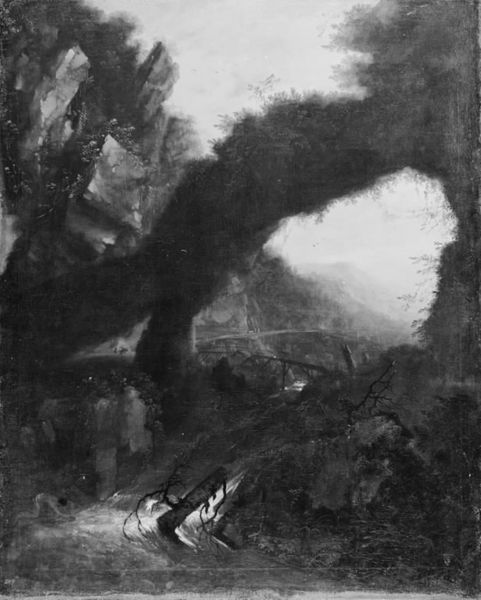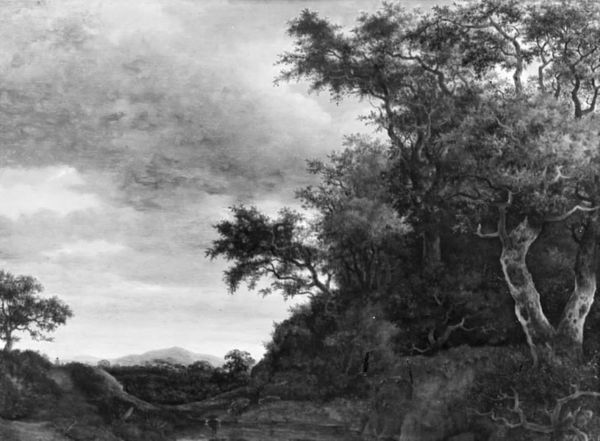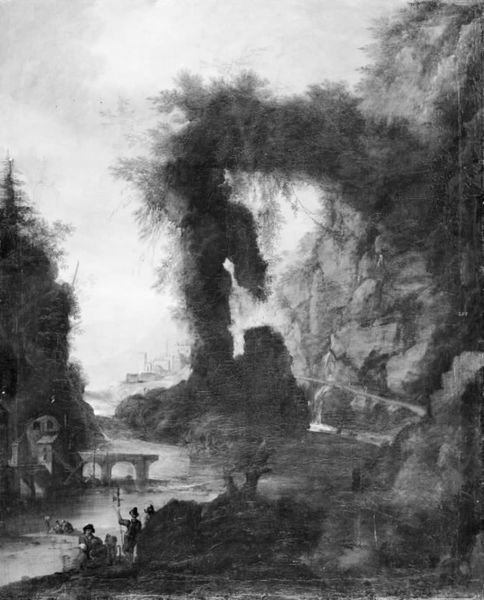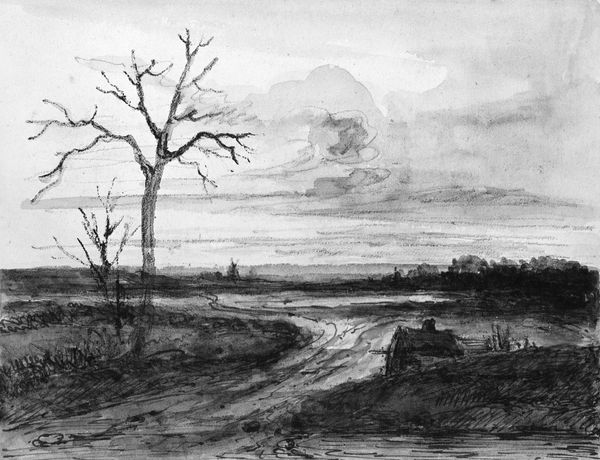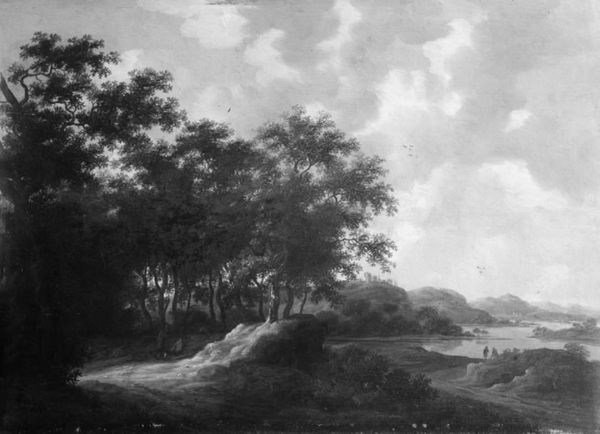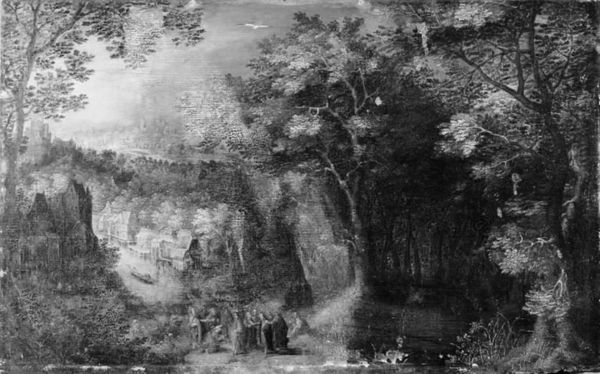
painting, oil-paint, canvas
#
painting
#
oil-paint
#
landscape
#
figuration
#
canvas
#
romanticism
#
fog
#
history-painting
Dimensions: 70 cm (height) x 97 cm (width) (Netto)
Curator: I’m immediately struck by how this canvas seems to vibrate with barely contained chaos. A raw, unsettling energy radiates from the scene. Editor: That's fitting. We are looking at Christian Holm’s 1827 oil painting, "French Cuirassiers Attacking a Russian Outpost,” held at the SMK in Copenhagen. It’s definitely an artwork brimming with historical tensions and the brutal realities of warfare. Curator: War's visual grammar repeats across eras—the churning masses, glimmers of weaponry, the sense of nature disrupted. Look at that prominent, gnarled tree in the center—a powerful symbol of resilience, yet twisted by the conflict. It makes me think of the enduring psychic damage of conflict. Editor: Absolutely. I see it also in relation to discourses on 19th century nationalism, as it developed after the Napoleonic wars. Consider how national identities were being forged, often through conflict and representations of heroic sacrifice—although I find little heroism here. The mood feels very different. The palette seems somber. There is nothing glorified here. Curator: The subdued colors contribute greatly to the psychological weight. There is also an interplay of light and shadow, a constant motif in depictions of violence: it hints at uncertainty but also dramatic effect. Editor: Note, too, the specific historical context. Denmark, where Holm lived and worked, had been deeply impacted by the Napoleonic Wars. Perhaps Holm's painting isn't so much a celebration of military prowess but a reflection on the widespread suffering caused by such conflicts. What a loaded image, really, about power, loss, and the very high price of empire. Curator: I completely agree. There's a feeling of inevitability in this tableau. This moment is merely a symbol of enduring realities across all human experiences: death and suffering. Editor: So, while appearing to capture a specific historical moment, this canvas is an invitation to consider broader questions around militarism, sacrifice, and how national narratives shape collective memory and perhaps obstruct collective healing. Curator: Precisely, seeing continuity within change – a constant through the visual echoes of time.
Comments
No comments
Be the first to comment and join the conversation on the ultimate creative platform.
